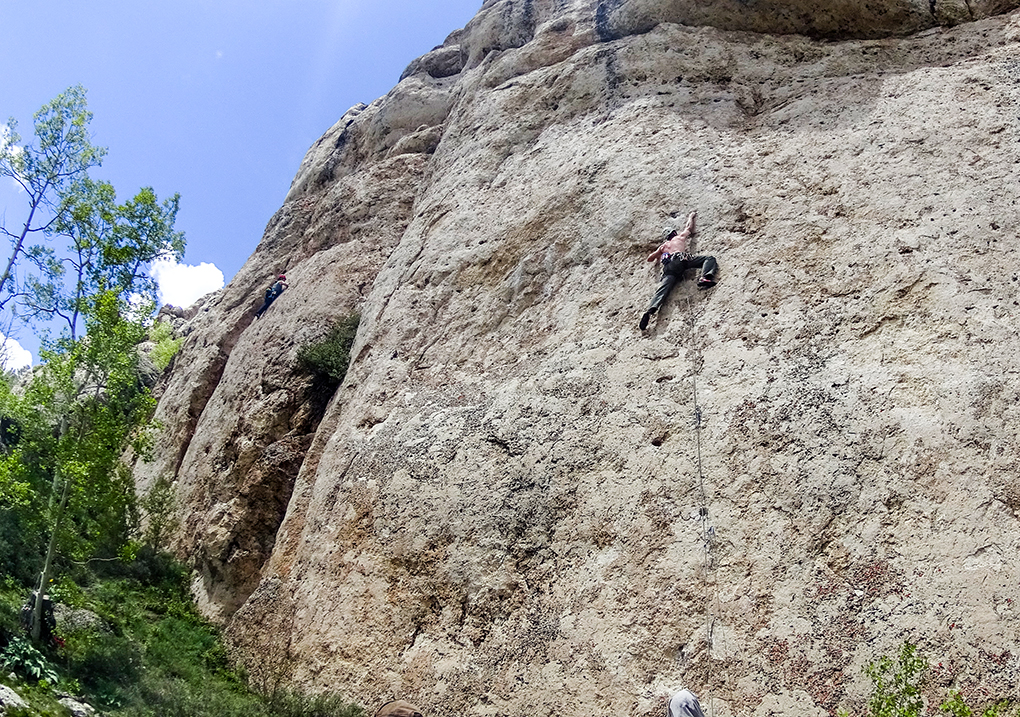Ideal Uses
While I did use the Corbie in more settings than would probably be advised, I stopped short of out and out abuse. Don’t use the Corbie for top-roping in a group setting. If you want a rope that will take a few seasons of abuse by group of friends, then you’re looking for a work-horse cragging rope, and you’re at the wrong end of the diameter spectrum. Head on over to the 9.5mm-and-up range.
Similarly, if you’re working a project and anticipate taking endless whippers while sussing out beta, you’re going to want something beefier than the Corbie.
The Corbie is a perfect rope, however, when you want to send the route you’ve been working on for a while now, though the extra boost you might get from a 8.6mm rope compared to more common “performance” ropes (~9.2mm) isn’t that significant.
Most of all, though, the Corbie does make a phenomenal alpine rope (if full length rappels aren’t a requirement). True, you could also bring a tag line and do long raps with the Corbie, but if you’re going to bring a tag line, you might as well get a set of skinny half/twin ropes (something sub-8mm) and have two dynamic lines in the system. Ultimately, this setting is what the Corbie is best suited for.
There was definitely a “getting-to-know-you” period between the Corbie and me. Because it’s superlatively thin for a single rope, my first time out with it (on vertical limestone at Shelf Road) I was, shall we say, less than psyched to whip. Of course, knowing that the rope will catch the fall isn’t quite enough in those moments, but thankfully that hesitation eased and I got used to treating it like any other rope before too long.
The handling is fast on the Corbie, so much so that you really work to hold your hangdogging buddy. At 8.6mm, it manages to evade the scope of the Gri Gri 2, though I have successfully belayed using the Corbie and a second generation Gri Gri (though it is outside the specs of the device, so be advised).
Durability
As far as real world durability, the Corbie has done pretty well for itself, surpassing my expectations. I’ve been able to take it up and down many single pitch climbs around the Front Range, and even dragged it across a few alpine routes when I knew I was looking at a walk off, or a few short rappels, to get down.

The rope has some sheath fuzzing to show for it (which is substantial in a few places), but it’s nothing egregious. To be honest, I thought I’d have retired the Corbie by this point. While it’s impossible to make sweeping claims about rope durability from a single data point, I can point my experiences in the Corbie’s favor.
Bottom Line
All of this paints a somewhat contradictory assessment for me. Ultimately, any reservations I have about the Corbie boil down to the niche for which the rope is made, rather than criticism of its quality. On one hand, it’s an awesome rope, to be sure, and most climbers would get a good season of steady use out of it—it sits near the top of the heap for lightning fast ropes that are as unobtrusive as possible while climbing.
On the other hand, you could argue that the Corbie is too specialized. Many climbers will find their needs better served with a set of twin ropes or a slightly thicker single rope, but if you have a lot of alpine objectives and you want a smaller, faster rope, the Corbie is a strong option.
